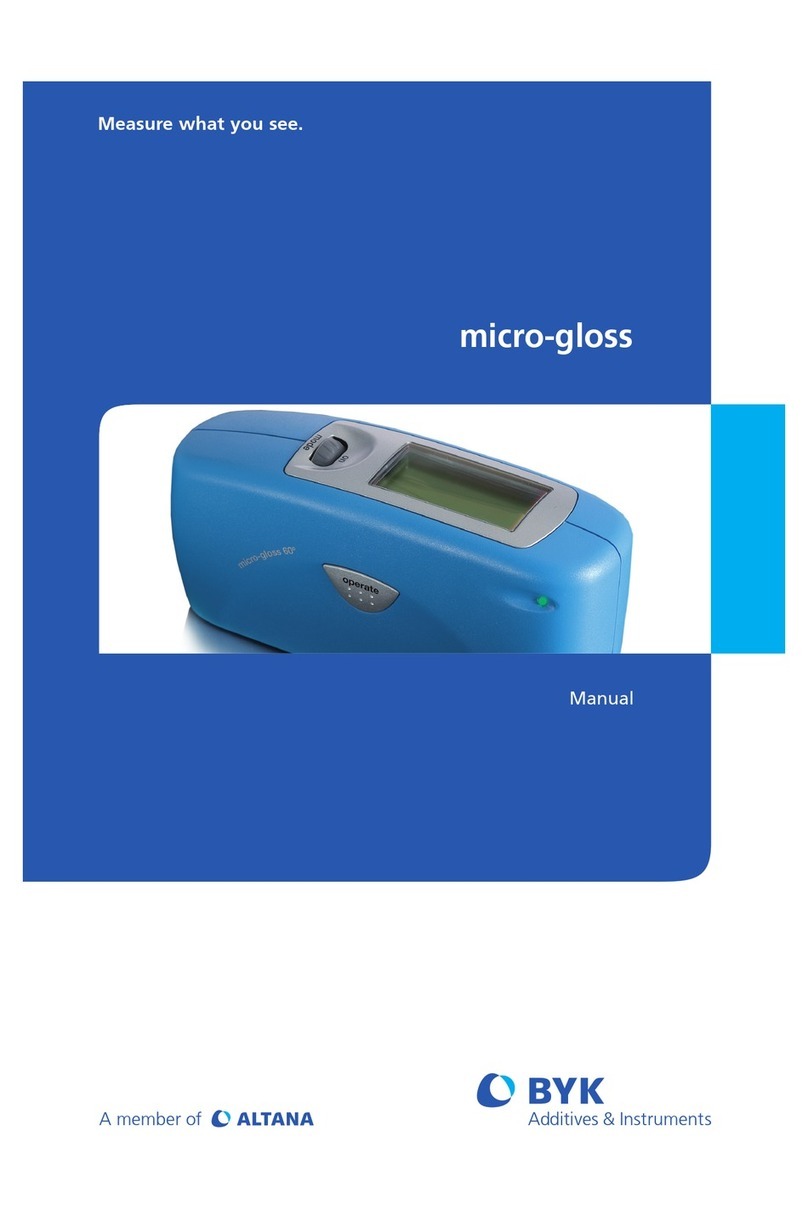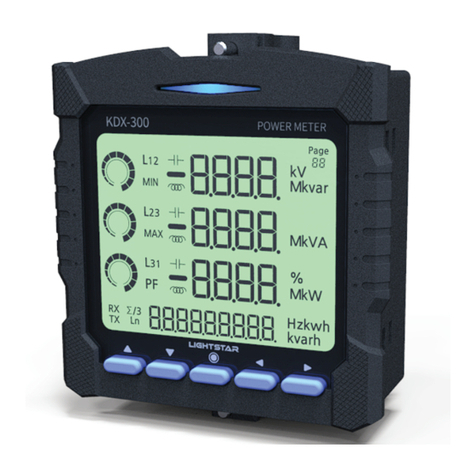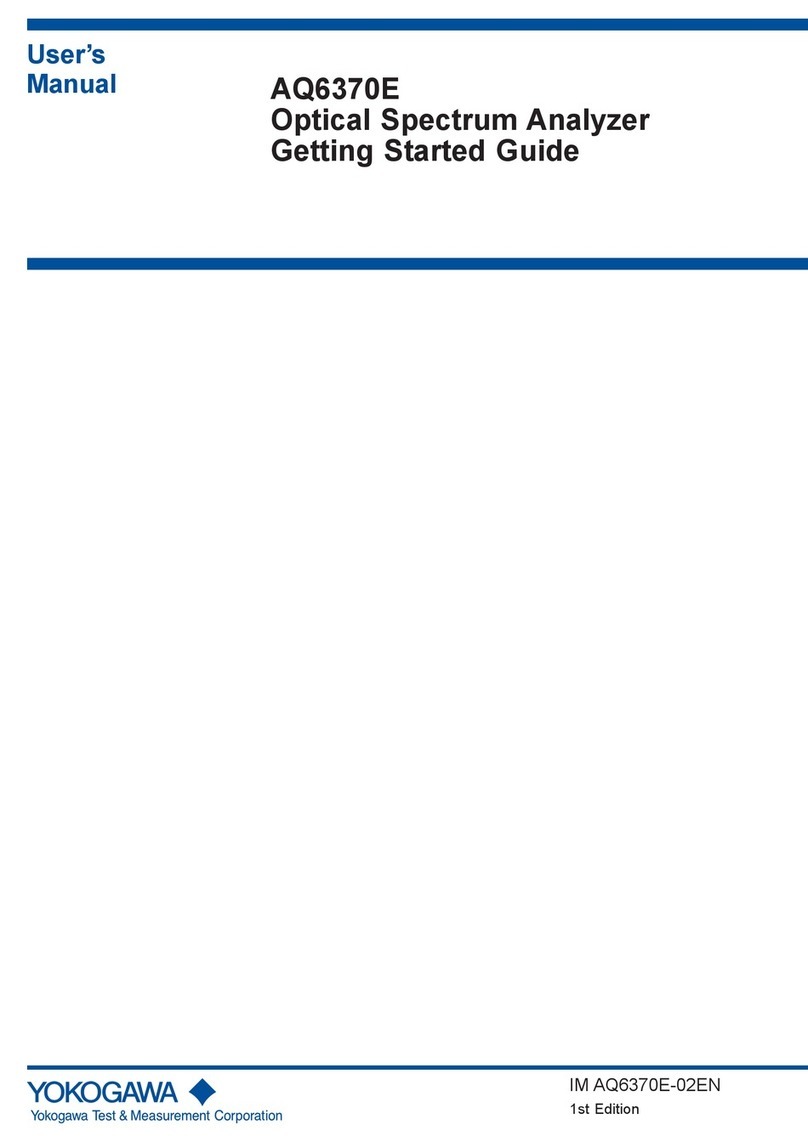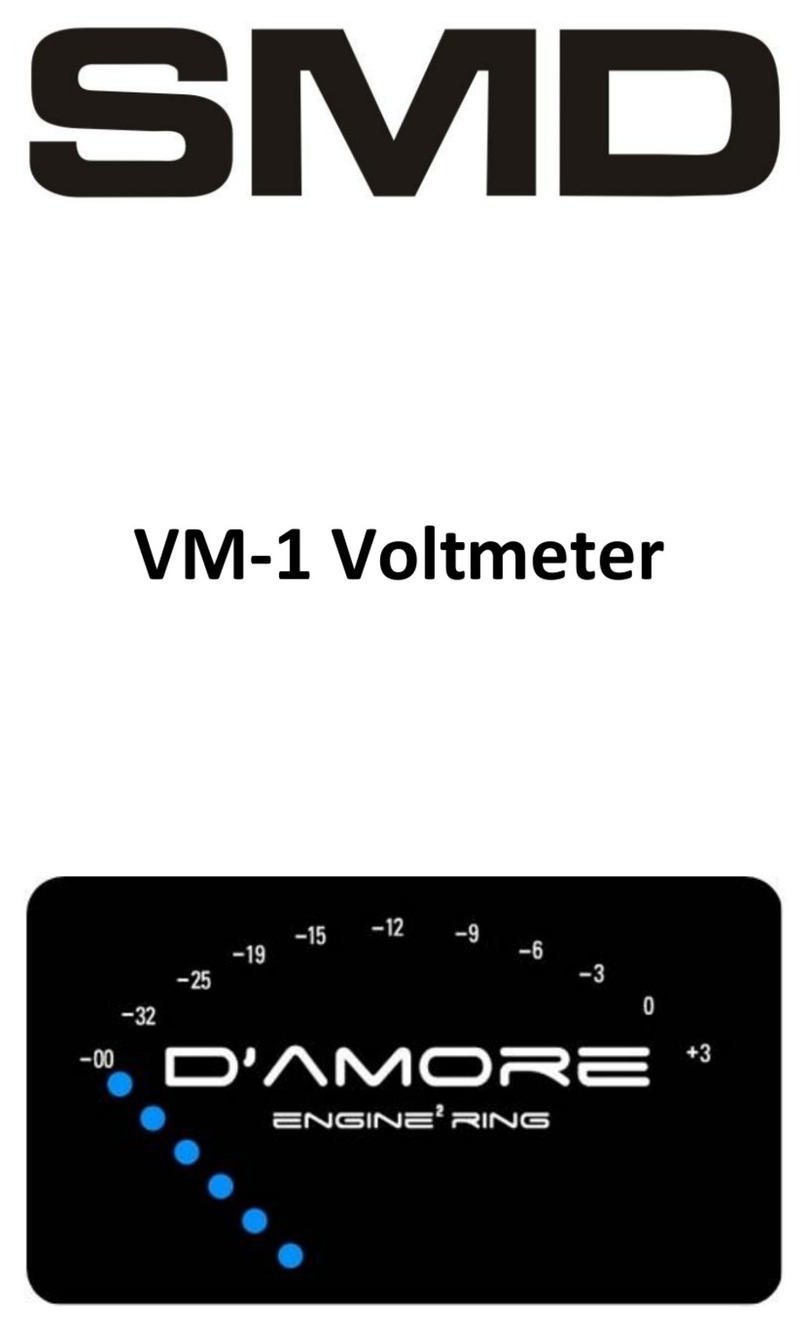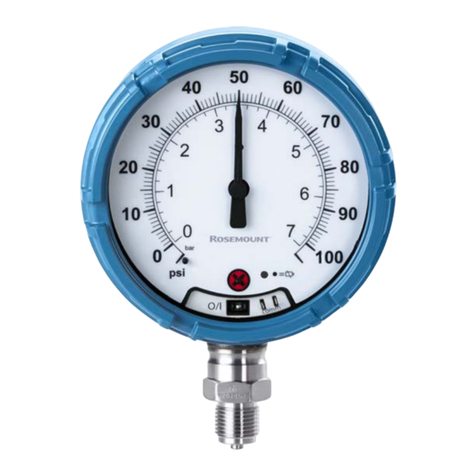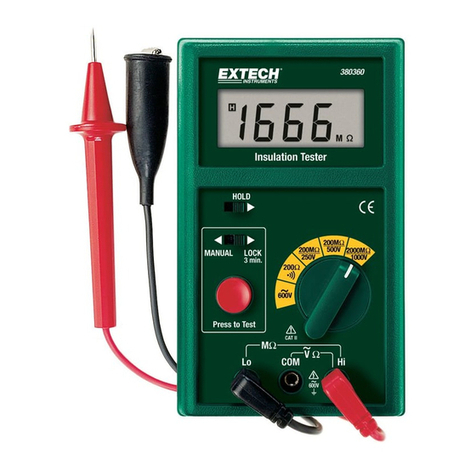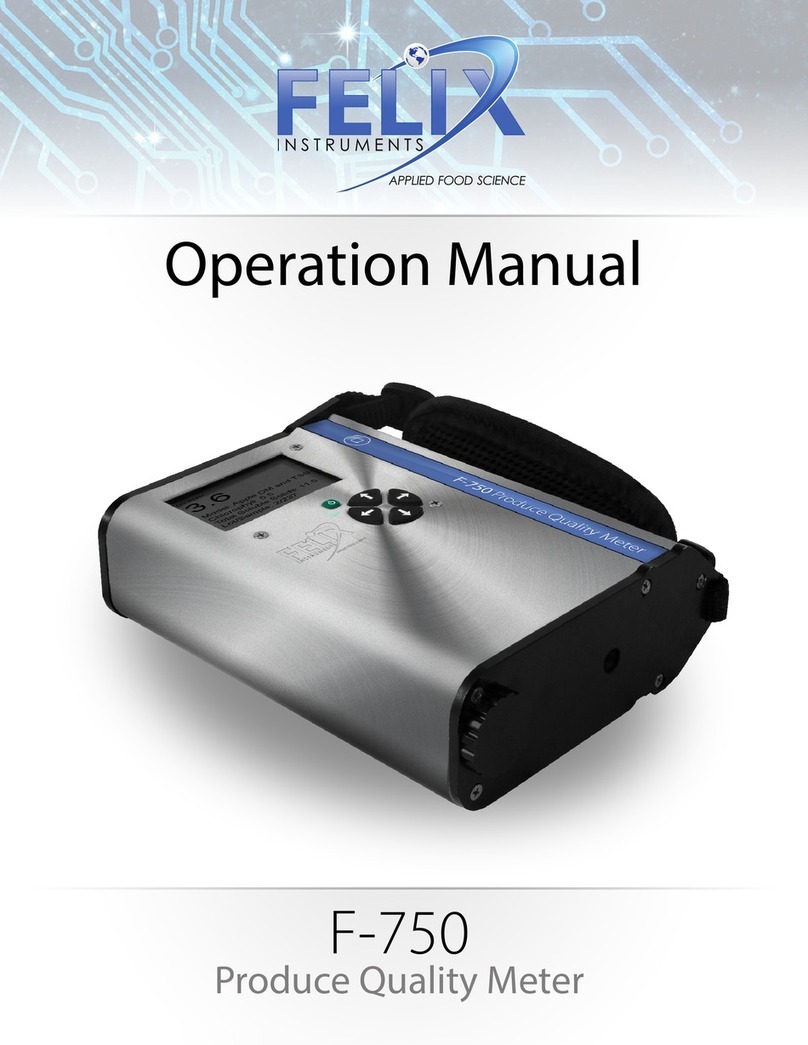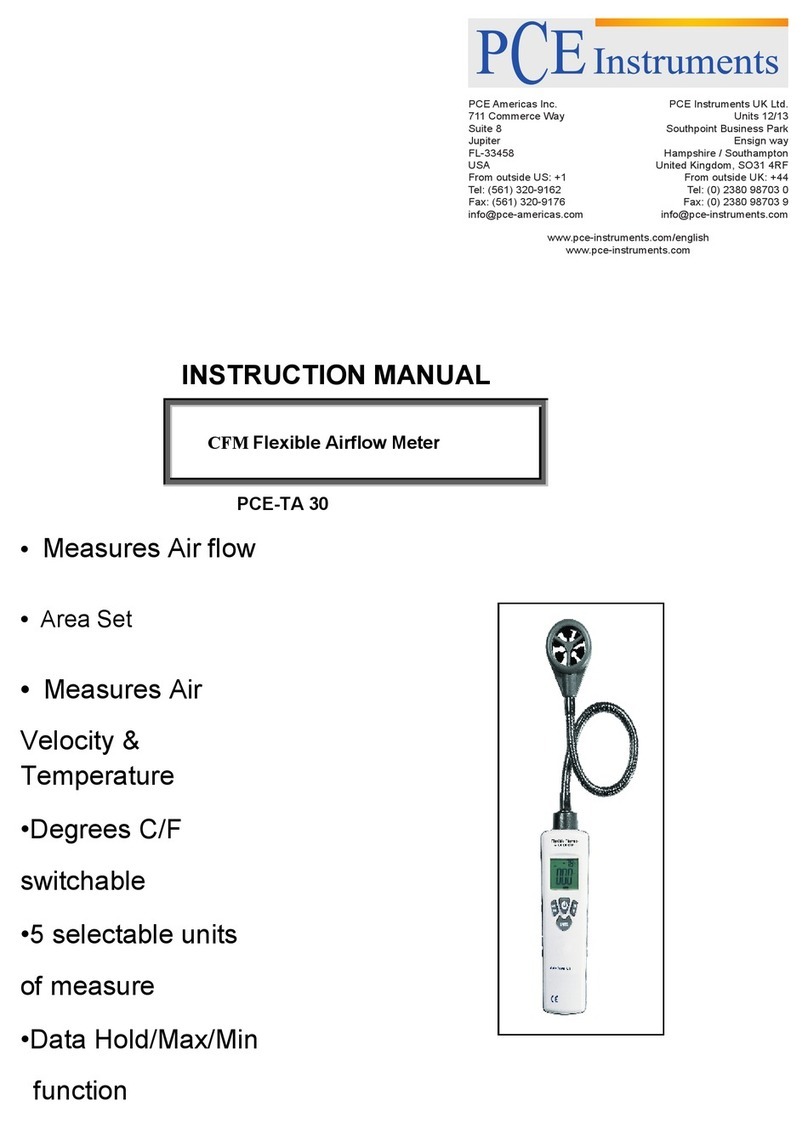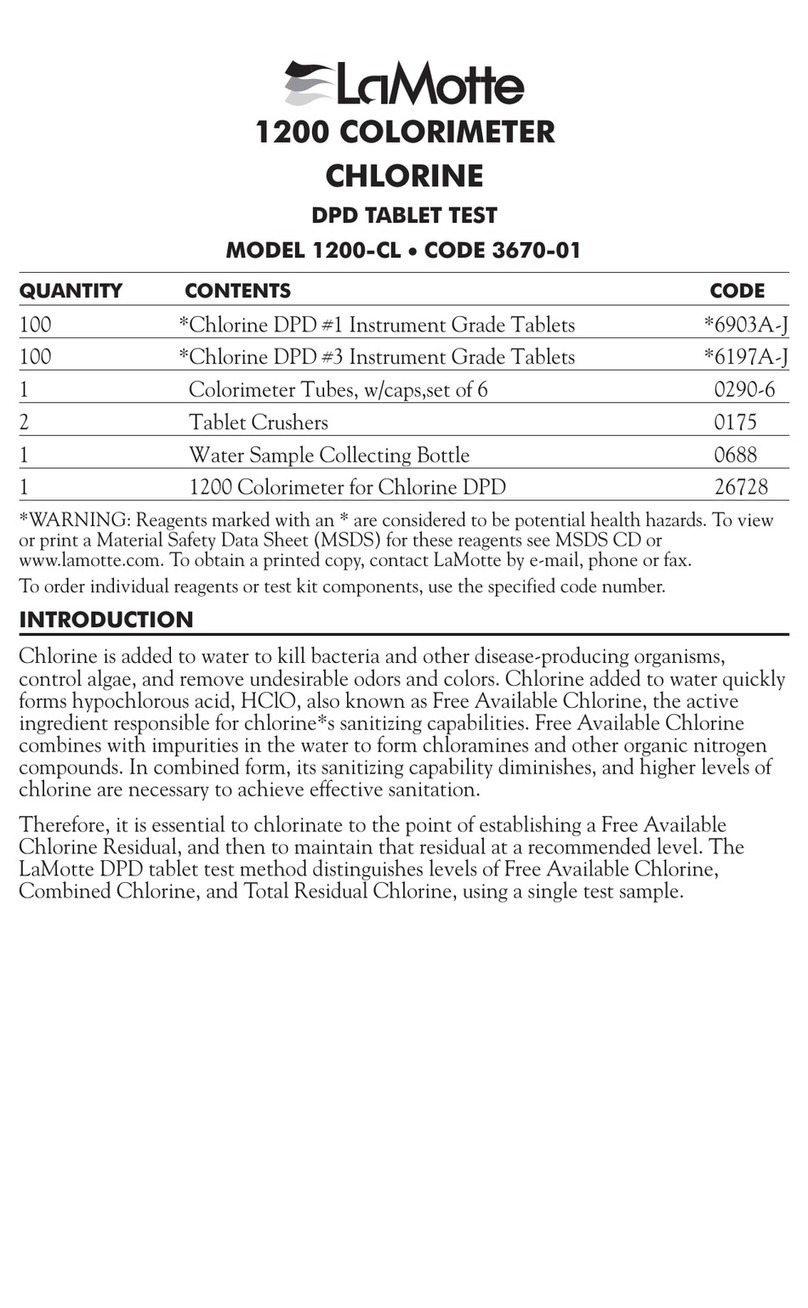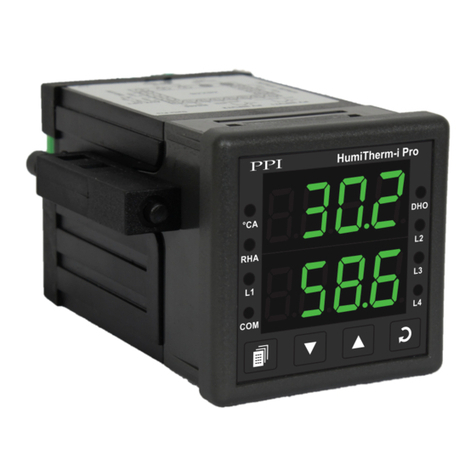Impact Subsea ISFMD User manual

IMPACT SUBSEA
INNOVATIVE UNDERWATER PRODUCTS www.impactsubsea.com
T. +44 (0) 1224 460 850
Impact Subsea Ltd, Company Number: SC498003, Registered in Scotland, Registered
Office: Unit 10, Castle Street, Castle Road Industrial Estate, Ellon, AB41 9FR, UK
W. www.impactsubsea.com
ISFMD
Flooded Member Detection System
Installation & Operation Manual
Revision Number:
1.2
Date
23rd April 2020

IMPACT SUBSEA
INNOVATIVE UNDERWATER PRODUCTS www.impactsubsea.com
Document No: 0000.1913 | Version No: 1.2 | 23rd April 2020 1
1.0 Introduction...........................................................................................................................................2
2.0 Specification ..........................................................................................................................................3
2.1 Probe Overview..............................................................................................................................3
2.2 Dimensions.....................................................................................................................................3
2.2.1 Probe: ......................................................................................................................................3
2.2.2 Probe Mount: ..........................................................................................................................4
2.3 Acoustic, Heading, Attitude & Temperature.................................................................................5
2.4 Communications, Power & Physical..............................................................................................5
3.0 System Components..............................................................................................................................6
3.1 Probe ..............................................................................................................................................6
3.2 Probe Protective Holder ................................................................................................................6
3.3 Cable Reel.......................................................................................................................................6
3.4 Topside Interface Box ....................................................................................................................7
3.5 seaView Software ..........................................................................................................................7
4.0 Hardware Setup.....................................................................................................................................8
4.1 Diver Deployed System..................................................................................................................8
4.2 ROV Deployed System ...................................................................................................................9
4.2.1 Connector Pin Out...................................................................................................................9
4.2.2 Power.................................................................................................................................... 10
4.2.3 Serial Interface ..................................................................................................................... 10
4.2.4 RS232 Wiring ........................................................................................................................ 10
4.2.5 RS485 Wiring ........................................................................................................................ 11
4.2.6 Establishing Communications.............................................................................................. 11
5.0 Software Installation.......................................................................................................................... 13
6.0 Conducting An FMD Test.................................................................................................................... 14
6.1 Understanding FMD Readings.....................................................................................................16
7.0 Servicing.............................................................................................................................................. 18
8.0 Theory of Operation........................................................................................................................... 19
8.1 Flooded Member Detection - Basic Principles ............................................................................19
9.0 Common Questions & Answers ......................................................................................................... 21
10.0 Warranty........................................................................................................................................... 23
11.0 Technical Support............................................................................................................................. 24
Every effort is made to ensure that information within this document is up to date. However, information within this document
is subject to change without notice, in-line with our commitment to continuous product development and improvement.

IMPACT SUBSEA
INNOVATIVE UNDERWATER PRODUCTS www.impactsubsea.com
Document No: 0000.1913 | Version No: 1.2 | 23rd April 2020 2
1.0 Introduction
Suitable for Diver or ROV use the ISFMD system provides the most advanced and reliable
acoustic Flooded Member Detection system available today.
Utilising a detection probe with broadband composite transducer technology, together with an
advanced digital acoustic engine ensures the highest level of accuracy and reliability in readings.
All readings are shown visually in the supplied seaView software package. Each reading is
accompanied with an energy and correlation level, providing the user with a clear
understanding as to the validity of each reading. A graph of all acoustic echoes detected is
provided, enabling a clear understanding of the acoustic environment of the member under
test.
Upon completion of the survey a full report is automatically generated with readings and
operator notes.
The core system components are shown below:
ISFMD Software
ISFMD Probe & Mount
ISFMD Cable Reel
ISFMD Topside Interface

IMPACT SUBSEA
INNOVATIVE UNDERWATER PRODUCTS www.impactsubsea.com
Document No: 0000.1913 | Version No: 1.2 | 23rd April 2020 3
2.0 Specification
2.1 Probe Overview
2.2 Dimensions
2.2.1 Probe:
All dimensions are in mm.

IMPACT SUBSEA
INNOVATIVE UNDERWATER PRODUCTS www.impactsubsea.com
Document No: 0000.1913 | Version No: 1.2 | 23rd April 2020 4
2.2.2 Probe Mount:
Top Down View
Side View
Front View
All dimensions are in mm.

IMPACT SUBSEA
INNOVATIVE UNDERWATER PRODUCTS www.impactsubsea.com
Document No: 0000.1913 | Version No: 1.2 | 23rd April 2020 5
2.3 Acoustic, Heading, Attitude & Temperature
Acoustic
Attitude
Frequency
500kHz
Pitch Range
± 90°
Roll Range
± 180°
Range
0.1 to 30m (Maximum range
dependant on member type)
Accuracy
0.2°
Resolution
1mm
Resolution
0.1°
Beam Angle
6° conical in water
Temperature
Signalling
Monotonic
Accuracy
0.5°
Pulse Length
Automatic
Resolution
0.1°
Heading
Accuracy
± 1°
Resolution
0.1°
2.4 Communications, Power & Physical
Communications & Power
Physical
Digital
RS232 & RS485
Weight (Air/Water)
0.5 / 0.325kg (Titanium)
Protocol
300 to 115200 baud
Depth Rating
4,000 meters (Titanium)
1,000 meters (Delrin®)
(6,000 meters option)
Data Rate
Up to 10Hz
Temperature
Operating: -10 to 40°
Storage: -20 to 50°
Input Voltage
9 to 36V DC
Connector
Subconn MCBH8M-SS
fitted as standard
Power (Standby)
25mA @ 24V DC
* 100% Tx power
Power (When
Pinging)
51mA @ 24V DC *

IMPACT SUBSEA
INNOVATIVE UNDERWATER PRODUCTS www.impactsubsea.com
Document No: 0000.1913 | Version No: 1.2 | 23rd April 2020 6
3.0 System Components
3.1 Probe
The ISA500 probe is the core sensor used in the ISFMD system. The
ISA500 is a hydro-acoustic device, which transmits pulses of sound
and detects corresponding returning echoes.
The probe operates at an acoustic frequency of 500kHz. The probe
utilises a broadband composite transducer and electronics
together with an advanced digital acoustic engine. The
combination of these enable the probe to achieve a high level of
sensitivity, making it an ideal FMD sensor probe.
3.2 Probe Protective Holder
A robust acetal holder, complete with stainless steel (316) 'T-
Bar', is provided for the ISA500 probe to protect the connector
and cable.
The holder also allows the unit to be held securely by a diver or
ROV manipulator during operation.
3.3 Cable Reel
A 100 or 200 meter length of cable is supplied on a reel.
Subsea, the cable is terminated with a Subconn connector for quick
connection to the ISA500 probe.
Topside the cable is terminated with a Souriau connector for quick
connection to the topside interface box.
ISA500 Probe
ISA500 Probe In Holder
Cable Reel

IMPACT SUBSEA
INNOVATIVE UNDERWATER PRODUCTS www.impactsubsea.com
Document No: 0000.1913 | Version No: 1.2 | 23rd April 2020 7
3.4 Topside Interface Box
A topside interface box is provided to enable quick connection
of all system components.
The supplied cable reel is terminated with a topside connector to
connect to the 'ISA500' port.
A power supply is provided to connect to the 'PWR' port.
A USB lead is provided to connect to the 'USB' port of the
Topside Interface Box and the desktop PC/Laptop.
The topside interface box communicates with the ISA500 Probe using RS485 serial
communications. The box then converts this communication protocol to USB for direct
connection to a laptop or PC.
3.5 seaView Software
A powerful software package is provided to
allow FMD survey readings to be made,
recorded and populated into a report.
seaView Software
Topside Interface Box

IMPACT SUBSEA
INNOVATIVE UNDERWATER PRODUCTS www.impactsubsea.com
Document No: 0000.1913 | Version No: 1.2 | 23rd April 2020 8
4.0 Hardware Setup
For use by a diver, please follow section 4.1 to setup the system. If installing to an ROV, please
follow section 4.2
4.1 Diver Deployed System
Step 1: Unpack All Items from Transport Case
Step 2: Connect ISA500 Probe To Cable Reel:
•Ensure Cable Reel Probe connector is lightly greased with supplied grease
•Push Cable Reel Probe Connector through protective holder
•Push Cable Reel Probe Connector onto Probe connector
•Secure in place with red locking collar (hand tighten only)
Step 3: Slide Probe Into Protective Holder:
•Align Probe flats with Holder flats
•Gently slide the Probe backwards into Holder
•Lock the Probe in place using 'Locking Bolt' (supplied with system)
Step 4: Connector Topside Interface Box:
•Connect topside mating end of cable reel to 'ISA500' Port
•Connect USB Cable to 'USB' Port. Connect other end of USB cable to
PC
•Connect Power Supply cable to 'PWR' port
The ISFMD system is now physically connected and ready for operation.

IMPACT SUBSEA
INNOVATIVE UNDERWATER PRODUCTS www.impactsubsea.com
Document No: 0000.1913 | Version No: 1.2 | 23rd April 2020 9
4.2 ROV Deployed System
For ROV installation, the ISA500 Probe should be mounted in its protective holder as per section
4.1 and held in the ROV manipulator.
The ISA500 is fitted with a SubConn MCBH8M-SS connector as standard. This will mate to a
SubConn MCIL8F connector/cable assembly.
4.2.1 Connector Pin Out
The standard ISA500 connector pin out is provided below:
Male Connector on ISA500 Unit
Pin
Function
Mating Wire Colour
1
0VDC
Black
2
9-36VDC
White
3
Analogue Out
Red (Not used for FMD)
4
0V Analogue
Green (Not used for FMD)
5
0V Digital
Orange
6
Trigger
Blue (Not used for FMD)
7
RS232 TX & RS485 A+
White/Black
8
RS232 RX & RS485 B-
Red/Black

IMPACT SUBSEA
INNOVATIVE UNDERWATER PRODUCTS www.impactsubsea.com
Document No: 0000.1913 | Version No: 1.2 | 23rd April 2020 10
4.2.2 Power
The ISA500 is polarity protected and fused with a 400mA resettable poly fuse. Internal
circuitry isolates the supply from the outside environment requiring the serial interface.
4.2.3 Serial Interface
The ISA500 serial communications protocol can be set to either RS232 or RS485. For use
with the ISFMD Topside Interface box, the unit must be configured to RS485
communications.
The RS232 and RS485 interface is isolated from the supply and has in-line fused protection
on the serial lines. A prolonged transient voltage on these lines will blow the surface
mount fuses which will require replacement by Impact Subsea or an approved distributor.
4.2.4 RS232 Wiring
Note: RS232 will not function if the digital 0V pin is not use as the RS232
ground.

IMPACT SUBSEA
INNOVATIVE UNDERWATER PRODUCTS www.impactsubsea.com
Document No: 0000.1913 | Version No: 1.2 | 23rd April 2020 11
4.2.5 RS485 Wiring
The RS485 termination resistor is software selectable.
The digital 0V must be connected on an RS485 interfaces, otherwise the
voltage potential between one of the A+ or B- lines to ground could
reach a damaging level
4.2.6 Establishing Communications
The default serial settings for FMD are RS485, 9600, N81
If the communications require to be changed to RS232 or an alteration in baud rate is
required, this can be conducted using the below method:
If the ISA500 is tilted from vertical to upside down 3 times within the first 10 seconds of
power up then it will temporarily configure the serial interface to RS232, 9600, N81 and
output an ASCII message displaying the settings.
Note: When the device is power cycled the serial interface setting will revert back to the
last configuration.

IMPACT SUBSEA
INNOVATIVE UNDERWATER PRODUCTS www.impactsubsea.com
Document No: 0000.1913 | Version No: 1.2 | 23rd April 2020 12
4.2.7 Connector Mating
When mating the cable to the SubConn connector, to maximise the life of the
connector, it is important to observe the following:
–Always apply grease before mating. Molykote 44 Medium grease must be used.
–Disconnect by pulling straight, not at an angle.
–Do not pull on the cable and avoid sharp bends at cable entry.
–Do not over-tighten the bulkhead nut.
Do not expose the connector to extended periods of heat or direct sunlight. If a
connector becomes very dry, it should be soaked in fresh water before use

IMPACT SUBSEA
INNOVATIVE UNDERWATER PRODUCTS www.impactsubsea.com
Document No: 0000.1913 | Version No: 1.2 | 23rd April 2020 13
5.0 Software Installation
The seaView software requires a desktop PC or laptop running Windows 7, 8 or 10 operating
system.
For optimum performance, a wide screen monitor should be used. To install and run the
software, please do the following:
•Plug the 'Impact Subsea' supplied USB stick into computer USB port
•Copy 'seaView' and 'FMD License' from the USB stick to the Windows desktop
•Run 'seaView'
•Click on the 'Start Here' icon
•Select 'FMD' and 'OK'
•Click 'Connect' in the lower left corner of the screen
•Select 'Comm Port' that the ISA500 Probe is connected to.
◦Hint - check Windows Device Manager if required
•Click 'Connect'
•Once Connected click 'Close'
A video of the above process can be viewed in the 'FMD' section of the Impact Subsea website.

IMPACT SUBSEA
INNOVATIVE UNDERWATER PRODUCTS www.impactsubsea.com
Document No: 0000.1913 | Version No: 1.2 | 23rd April 2020 14
6.0 Conducting An FMD Test
Having completed the hardware setup (Section 4.0) and software setup (Section 5.0) the ISFMD
system is now ready for operation.
For certainty of operation, it is recommended that prior to testing members subsea, a known
flooded member/non flooded member should be checked to ensure system is setup correctly
and fully operational.
Using the seaView FMD application, conduct a FMD test as follows:
Step 1: Input parameters of member to be tested
•Click on 'Setup'
◦Input member Diameter (Critical)
◦Input Transmit Power (Critical)
◦Set Length of member (if known)
◦Set Member Angle (if known)
◦Set Depth of lowest point (if known)
Clicking the 'Close' button will save the settings and automatically configure the acoustic
settings of the ISA500 Probe to suit the member to be tested.
It is critical that a correct member diameter (in meters) is entered - the system will
restrict the test window to the range entered - ignoring any returns beyond this range.
It is also critical that a sufficient power level has been chosen for the member under
test. In general the power level should be set to as high as possible without causing
spurious readings.
Step 2: Place the ISA500 blue circular transducer in direct contact with the member to be
tested. The mating surface of the member should be clean and free from marine growth
Step 3: Click on 'Ping' in the seaView FMD Application
•If a return is detected the distance measured
will be displayed in the pipe profile. This
indicates that the member is flooded:
•If no return is detected, no value will be
shown in the pipe profile. This indicates that
the member is not flooded:
Example: Not Flooded
Example: Flooded

IMPACT SUBSEA
INNOVATIVE UNDERWATER PRODUCTS www.impactsubsea.com
Document No: 0000.1913 | Version No: 1.2 | 23rd April 2020 15
Step 4: Add reading to on-screen display of Member
•Click 'Add' to record a reading on the Member and to
include in the final report.
•The distance along the member/pipe that the reading
was taken (in meters) can be entered at this point.
Step 5: Repeat the above process at all points on the member that you wish to check.
As readings are made and added, the member on screen will show each reading at
is relative position. Clicking on the measurement on screen will allow that
measurement to be deleted or its distance along the pipe edited:

IMPACT SUBSEA
INNOVATIVE UNDERWATER PRODUCTS www.impactsubsea.com
Document No: 0000.1913 | Version No: 1.2 | 23rd April 2020 16
6.1 Understanding FMD Readings
Within the reading window, there is a bar of yellow and green for any measurement that
detects the presence of water/liquid:
The yellow bar shows the total energy level received back at the ISA500 probe.
The green bar shows the proportion of that energy that is a valid echo.
The yellow energy bar ranges from 0 to 1 where 1 represents full saturation of the ISA500 Probe
receiver. An energy level of 0.707 (square root of 2) is the theoretical perfect level as it
represents the energy of a pure sine wave with an amplitude utilising the maximum dynamic
range of the ISA500.
The green bar ranges from 0 to 1 which represents a quality factor of the returned echo. A
value of 1 would represent a return echo of perfection with negligible noise and distortion.
The correlation value can be used alone as a trust factor where low values would mean there a
good possibility it's a false reading. A more detailed picture can be built by combining this
information with the energy level as shown in the table:
Low energy levels
High energy levels
Low correlation
Weak signal probably false
reading
High noise level most
likely a false reading
High correlation
Weak signal but likely a good
reading
Ideal conditions very
trust worthy readings
These values can also give some insight for adjusting the transmit power. If the energy level is
low then consider increasing the amplitude of the transmit pulse (under 'Setup' in the seaView
FMD application).
Please note, it is the responsibility of the user of the ISFMD system to satisfy him/herself as to
the validity of readings.

IMPACT SUBSEA
INNOVATIVE UNDERWATER PRODUCTS www.impactsubsea.com
Document No: 0000.1913 | Version No: 1.2 | 23rd April 2020 17
In conjunction with the reading window, which shows the reading the ISFMD system has used
for range measurement, all other detected echoes can be viewed in the display to the left:
Echo Detected at Member Diameter
On the above display, the area where a return is expected to be received if a member is flooded
is highlighted in blue. If a return is received in this area the member is considered flooded:
The blue window extends +/- 10% of the member diameter to account for variations in speed of
sound through the member wall and internal medium*.
As with any acoustic based FMD system, when an acoustic pulse is transmitted into a flooded
member, it is usual to detect an acoustic return from the back wall.
There may be other echoes however, from any item suspended in the water or from multi-path
effects.
The above window allows the operator to see each acoustic echo the ISA500 probe has
detected. The x-axis represents range (in meters) with the y-axis representing power level of
each echo.
This window is provided to create a clear view of the acoustic environment within the flooded
member.
*Note – the blue window is only in seaView versions 1.9.1 and above.

IMPACT SUBSEA
INNOVATIVE UNDERWATER PRODUCTS www.impactsubsea.com
Document No: 0000.1913 | Version No: 1.2 | 23rd April 2020 18
7.0 Servicing
The ISFMD system is a highly robust measurement device. The system has been designed to
require minimal maintenance, and as such there are no user serviceable components within the
system.
The ISA500 probe should be rinsed in fresh water after each use to remove salt deposits. If
required a light detergent (such as that used to clean household dishes) can be used.
DO NOT USE SOLVENTS TO CLEAN THE UNIT
Following rinsing the unit should be dried with a cloth.
The connector should be cleaned, and a light coating of Molykote 44 Medium grease should
be applied.
The unit should be stored in its original case, in a cool, dry place.
It is recommended that the unit be returned to Impact Subsea Ltd, on an annual basis to have
a health check and service conducted.

IMPACT SUBSEA
INNOVATIVE UNDERWATER PRODUCTS www.impactsubsea.com
Document No: 0000.1913 | Version No: 1.2 | 23rd April 2020 19
8.0 Theory of Operation
8.1 Flooded Member Detection - Basic Principles
This section examines how Flooded Member Detection is achieved by the system.
For the purpose of detecting Flooded Members, the ISA500 is a hydro-acoustic device, which
utilises sound pressure waves in order to determine the presence of water or liquid in a
member.
Acoustics (also known as hydro-acoustics or sound pressure waves) are used by the ISA500 due
to their high efficiency in travelling through water or liquid. Through water acoustics can travel
far greater distances than signals in the light or radio frequency spectrum. Thus, are the ideal
method to use for measuring distance underwater.
The ISA500 operates by emitting an acoustic pulse into the member to be tested. This pulse
travels through the water, the wall of the member and into the inside.
If the member is full of water/liquid (flooded) the sound will continue through the member to
the corresponding side.
At which point part of the pulse is reflected back to the ISA500.
This reflected portion is detected by the ISA500 and the time taken for this acoustic pulse to
travel from the ISA500, bounce off the corresponding member wall and return is recorded.
The distance the acoustic pulse has travelled can then be calculated by the simple equation:
Distance = Speed x Time
In water, the speed of sound is typically around 1,500 meters per second. This is influenced by
various factors (temperature, salinity & pressure). However, for the purpose of this
explanation, we will assume a speed of sound of 1,500m/s.
Table of contents
Other Impact Subsea Measuring Instrument manuals
Popular Measuring Instrument manuals by other brands
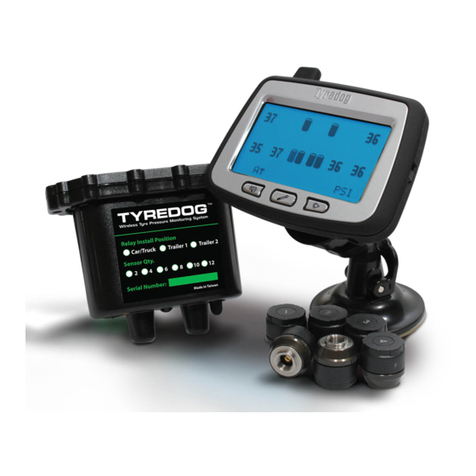
Tyredog
Tyredog TD2700F Adding a Relay / Programming Sensors
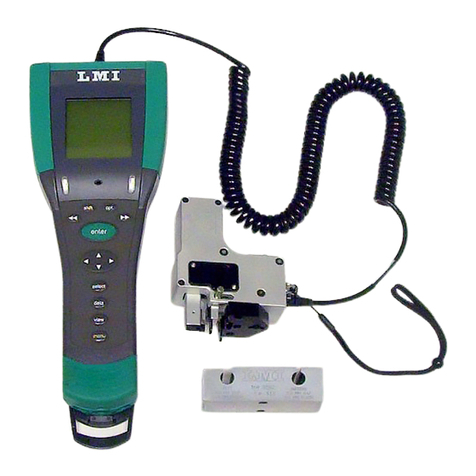
LMI
LMI 241-BWV2 Configuration and Mastering Instruction
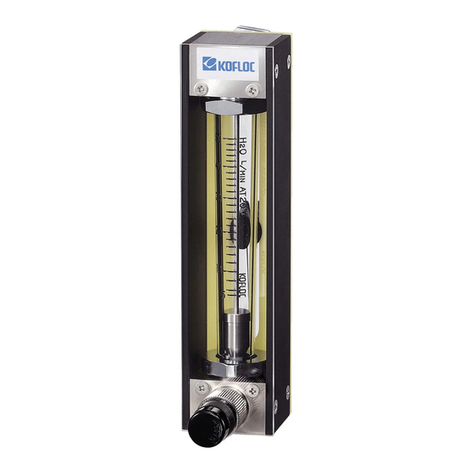
Kofloc
Kofloc RK1812 Series instruction manual
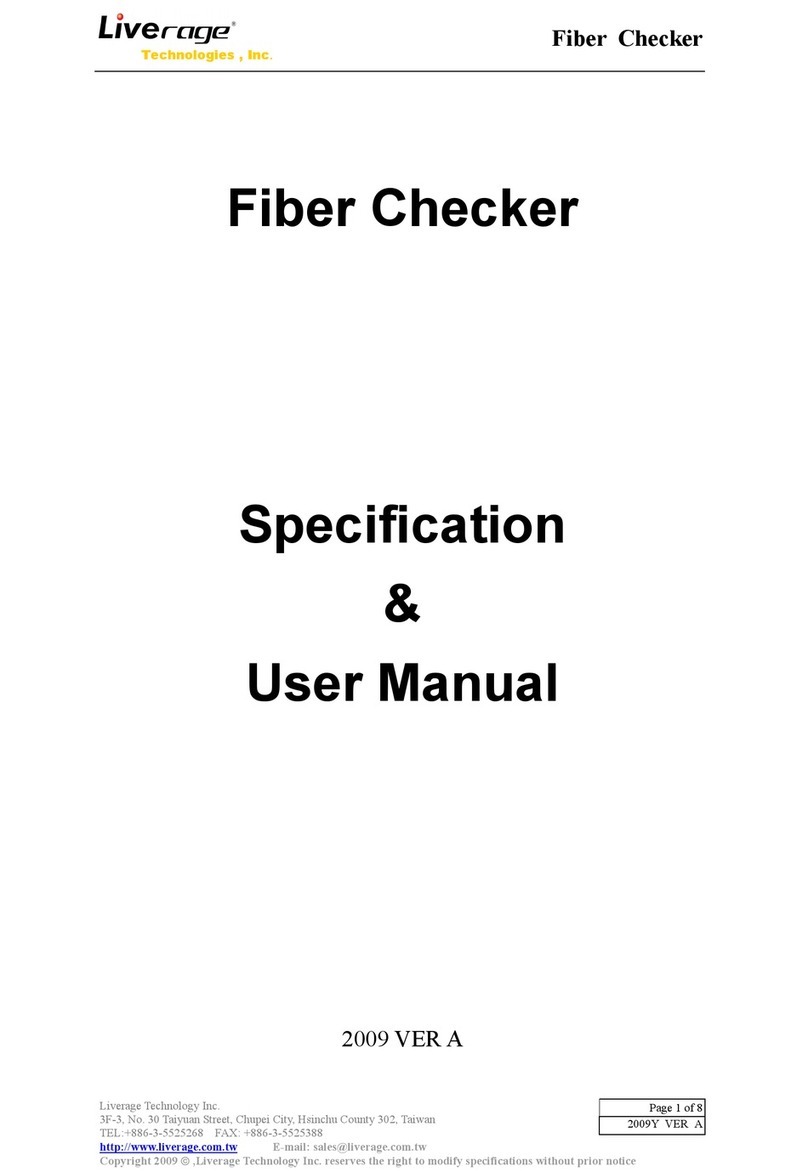
Liverage
Liverage Fiber Checker User manual and specifications
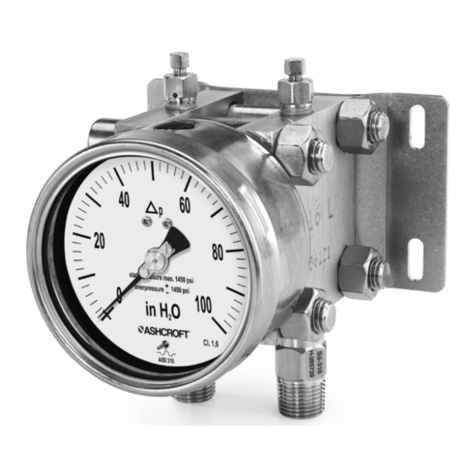
Ashcroft
Ashcroft F5504 Installation and maintenance instructions
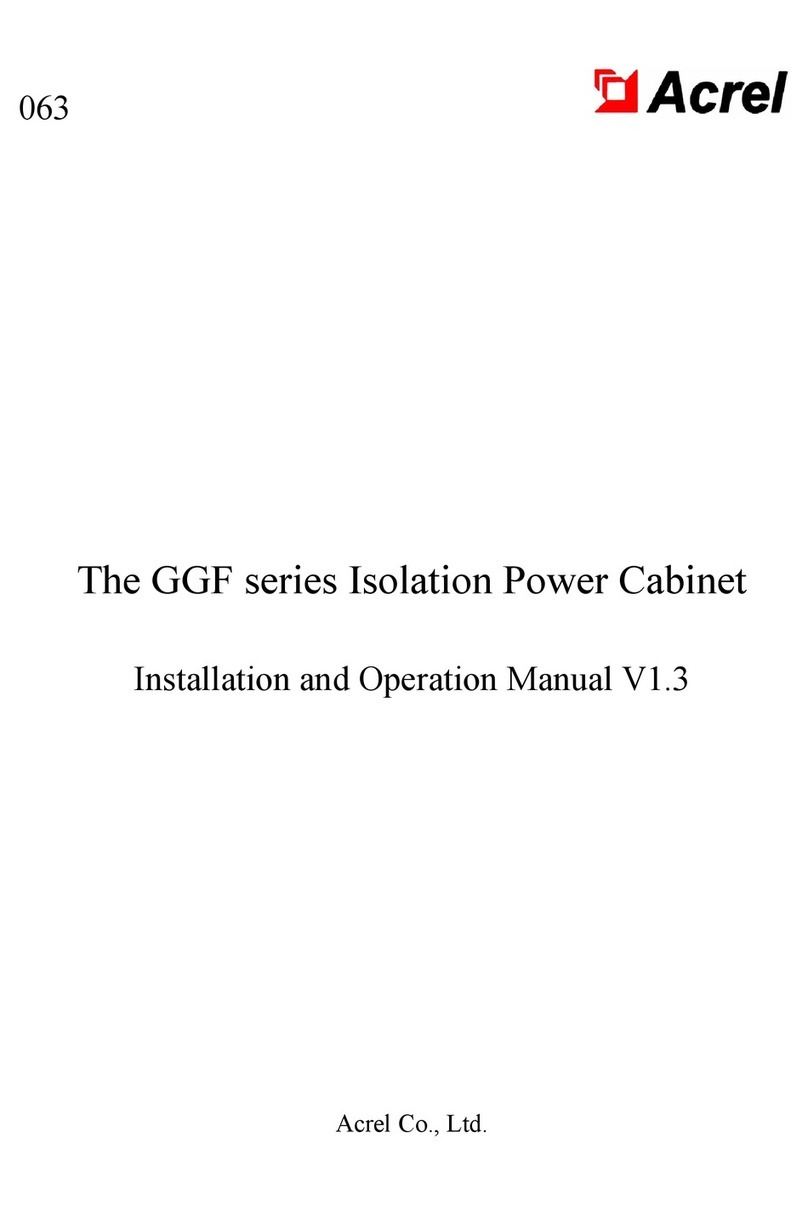
Acrel
Acrel GGF Series Installation and operation manual


